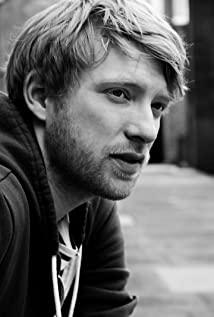In the second season of "Black Mirror", the basic opposition between the first and third episodes is obvious: in the first episode, we see the male protagonist die and then resurrect in a virtual way (high-tech created The simulation robot can imitate the male protagonist’s thinking habits and language very realistically, and to a certain extent maintain his interpersonal relationship and historical traces in real life); and in the third episode, we see that the male protagonist is real He lives (in the dark night at the end of the film, although he is lonely, he is still a living life), but he died in a virtual way (his painstaking effort-the cartoon character Waldo-has been taken away, and he is lost Lost his own symbolic value, lost his own voice, and became a ghost in the dark night). The inner tension of this opposition is embodied in: virtual living is more real than real living. For the heroine in the first episode, the virtual robot not only provides real and even surreal physical feelings, but also provides emotional comfort and the possibility of communication. For the heroine in the third episode, all of his Real life is just hiding behind the cartoon character Waldo and speaking for him, without the opportunity to express his true self. He created a cartoon symbol, became it, and was finally swallowed by the cartoon symbol. Similarly, we have to say that virtual death is more real than real death. In post-modern life, the real value of the subject is nothing but the meaning and effect oscillating in the social network, and it has already been separated from its inherent material properties. When the male protagonist in the third episode peels off the signifier chain of meaning and becomes a lonely link, he is truly dead on the symbolic level.
The consistency of the first and third episodes beyond the opposition shows the wonderful inversion of the symbolic function of signs in the postmodern era. The paradox of "the king’s two bodies" cited by Zizek—the king’s body is a combination of a sublime, immaterial, and sacred symbol and a secular body succumbing to corruption and the cycle of generation. It exists in In such a curious fact, once a person acts as a king, its daily and ordinary characteristics will be transformed into a charming object through a substantive change, which has been completely invalidated in post-modern political life. In the first episode, the symbol of the protagonist's social existence is not only not sublime and surreal, but superficial and secular. The virtual robot is a perfect self-image, but it can never be completely consistent with the self-reflection as a re-mark, itself is always a superfluous mark. It can only reflect on itself in a distorted and displaced way. The heroine soon gets tired of the rigid and rigid imitation of the robot. What she expects is to see the failure of the imitation, the blank space that is re-marked, and the fleeting brilliance of humanity that may appear on the symbolic body. In the third episode, Waldo, a virtual cartoon character, "is not real", "he doesn't stand for anything", it will only be foul language, gag, and has no relation to the noble temperament of democratic politics. But as the protagonist boss said, "he is not real, but he is realer than all the others", "he doesn't stand for anything, but at least he doesn't pretend to". In the era of flat meaning and lack of depth, a truly serious attitude is just a mockery of all serious attitudes. What is missing from a virtual robot? What does Waldo stand for? Should the answers to these two questions be answered by using the abused term "significant without signification"? Here it is the master signifier S1 that continues to supplement the signifier chain S2, and isn't it precisely because it does not refer to any signified that makes it the representative of all other signifiers?
Finally, we return to the second episode. The episode "White Bear" undoubtedly aroused the strongest emotional resonance among the audience in the entire miniseries. This impact is completely understandable: if the first and third episodes are fables about two kinds of death, the former is the death of the body, and the latter is the death of the symbol. Then the second episode, as its location proves, is between two deaths. Here we are going back to Zizek’s cumbersome explanation of Hegel’s "negation of negation"—the first type of death that attempts to deny the object's intuition, thus unconsciously moving toward its own opposite and becoming the object's other. ; And the second kind of death not only denies the object, but also the system of interaction implied by the object, thereby denying a complete unity. The first episode is the first type of death. The protagonist dies, but is still alive in the world; the third episode is the second type of death. The protagonist dies in the world, although he is still alive. The second episode is an endless cycle of tragic process-the protagonist dies in the world again and again, but at the same time comes back to life as himself again and again. This constantly dying but immortal image has always been the eternal theme of artistic creation. If we recall when a movie about aliens was called "Prometheus", this direct commonality-the image of the living dead- -Isn't it obvious yet? Life beyond death is not only an immortal object, but also a life deprived of support by the symbolic order. To interpret this episode, we need to resist the so-called "humanitarian care for executed prisoners" or "entertainment to death" on the intellectual level, and we must see how a real subject is produced-killing Death of her is precisely the only behavior that gives her consistency. Our society as a whole operates so closely around this "resistance to symbolic surplus" that the permanent death or permanent salvation of the heroine will cause us to lose everything.
So why this mini-series is called "Black Mirror", the title of Rodeph Gasser's "The Tain of The Mirror" (The Tain of The Mirror) provides an answer: when the mirror removes its shiny reflective surface, we look What I got is its black back. Tin foil is not only the possibility of reflection, but also the limitation of reflection. "Black Mirror" is therefore a paradox about reflection: no subject can see oneself through oneself, and can only refer to the self by copying the self in the other. This copy is imperfect (first episode), but it is necessary (second episode), and even the only way for the subject to exist (third episode). Every kind of duplication also means a kind of death, and any reader familiar with Lacan knows their names.
View more about Be Right Back reviews











